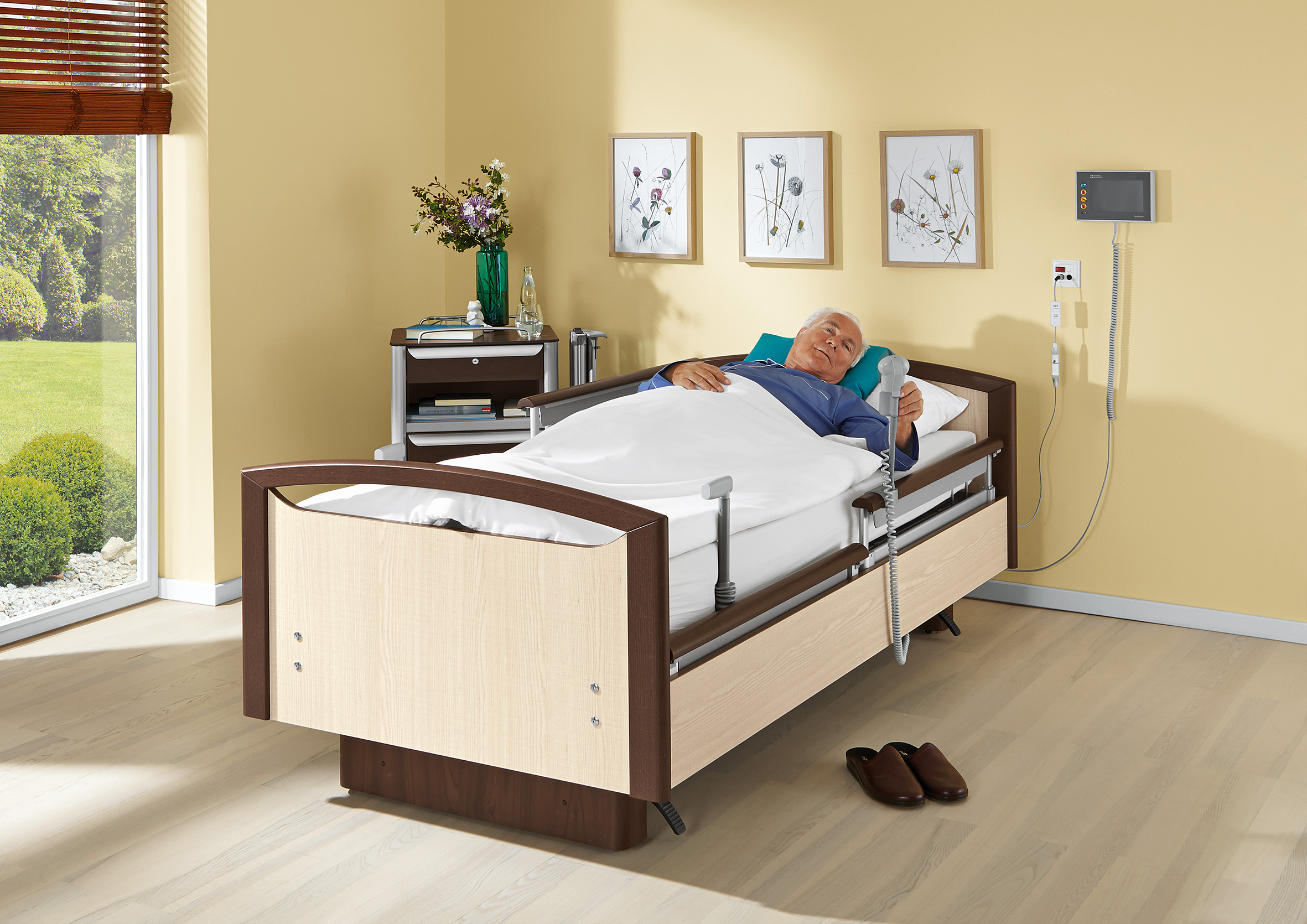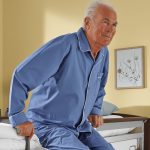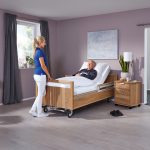Using pure new wool and sheepskin to reduce shearing forces on the skin is now a thing of the past, because now there are sophisticated systems for pressure relief and the prevention of bedsores. Pressure ulcers are favored by localized pressure. Body regions with little soft tissue coverage by muscle or fat are particularly at risk, as well as the sacral bone, heels and ankles. While healthy people frequently turn over autonomously in order to relieve the pressure on endangered areas of skin, this is not the case for care-dependent people confined to bed, increasing the risk of bedsores. Diabetics, whose wounds heal worse anyway, as well as patients with immune deficiency, are especially predisposed to pressure ulcers.
To prevent pressure sores, it is necessary to reduce pressure on the vulnerable areas. Bedridden patients are regularly repositioned and the body areas most affected are exposed or cushioned. It is also important to ensure correct skin care and nutrition. For residents suffering from incontinence, regular changing of the sheets is required, simply because of the irritating effect of urine and feces on the skin. It is also important to spread out creases in bed underpads, to avoid tight clothing and to attach catheter or probe tubes in such a way that they do not chafe. Last but not least, rapid mobilization of affected residents is the goal. For a long time, affected residents were also laid on soft positioning mattresses, working on the principle of increasing the body's contact surface, but if a patient does not receive enough assistance in performing movements, this may result in a slowdown in their fine motor skills (IGAP – Institute for Innovation in Health Care and Related Research in Nursing Care). Now there are more sophisticated systems, with which pressure is only applied over a short period of
time. With alternating pressure systems, the natural movement of patients is imitated by inflating different air cushions with air alternately, resulting in alternating pressure relief several times an hour. The Air2Care alternating pressure system was designed, for example, for the long-term care of care-dependent people with a low or intermediate risk of bedsores. Apart from static cells in the head and back area to provide stability, alternating air cells provide effective prevention of
bedsores. A vapor-permeable bi-elastic mattress cover helps prevent skin macerations by draining moisture well and allowing the skin to breathe. Pressure can be maintained for up to twelve hours, even if the mattress is separated from the control unit, meaning that it is therefore suitable for transportation.


